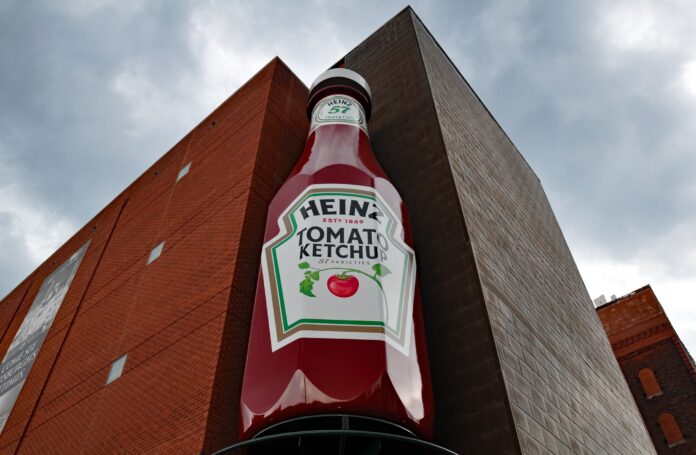Kraft Heinz lessons
- Kraft Heinz reportedly preparing to split
- 2015 merger faced cultural and strategic issues
- Cost-cutting hurt innovation and brand relevance
- Failed to adapt to health and wellness trends
- Private labels and premium brands gained ground
- Consumer loyalty declined amid rising prices
- Industry continues to pursue big mergers despite risks
News that food giant Kraft Heinz is reportedly preparing to split has sent shock waves through the food and beverage industry.
But while company representatives are staying silent on the potentially historic demerger, saying Kraft Heinz does not comment on “rumours or speculation”, the rumour mill has gone into overdrive to establish what went wrong. And, more importantly, understand how others can avoid a similar situation.
Where it all began
Kraft Heinz was founded in 2015, when Warren Buffett’s Berkshire Hathaway and Brazilian private equity firm 3G Capital combined Kraft Foods and H J Heinz into one.
But problems began to emerge almost immediately as the union proved less than successful.
Also read → Kraft Heinz reportedly preparing to split

Why did the Kraft Heinz merger fail?
It appears the Kraft Heinz merger was doomed from day one.
“Heinz and Kraft had very different cultures, creating obstacles from the start,” says Jenn Szekely, president of branding agency Coley Porter Bell.
From there, things have gone from bad to worse.
“The main strategy of this merger was cost-cutting and market expansion internationally,” says Mahsa Shahbandeh, food and agriculture research expert at market insights firm Statista.
But focusing on efficiency and cost saving, while its brands were already experiencing declining consumer interest, may well have contributed to the failure of the combined business, she explains.
Failure to adapt
The company failed to adapt to changing consumer tastes, leaving it trailing behind its competitors who deliberately targeted its market share.
“Before the merge, Kraft Heinz’s competitors were already turning to healthier food alternatives as the health and wellness trend grew,” says Shahbandeh. “Then when inflation led to price rises, retailers who had previously supported the brand became the competition – focusing on affordability and innovative tastes and flavours through their private labels.”
Not segmenting the market
Kraft Heinz also failed to recognise the different requirements of its consumers across the entire business.
“It’s important to consider the difference in consumer trends within different food segments and categories when merging,” says Shahbandeh. “To give an example, in Heinz’s condiments and sauces category, brand name and new flavours have been the main purchasing criteria and should therefore be the primary focus. However, for Kraft’s ready-to-eat meals, the main investment should be health claims and nutritional values as that is where consumer interest currently lies.”
Long-term investment overlooked
Arguably the biggest mistake Kraft Heinz made, says Shahbandeh, is failing to understand the importance of long-term investment rather than short term cost efficiency gains.
Money saving was prioritised over long-term success.
Though not all of the problems could have been predicted.
Cost-of-living crisis
Rising food prices have hit many consumers hard, resulting in a change in spending habits.
“Consumers are not as loyal to brands like Kraft Heinz anymore. Instead they’re increasingly switching to private labels to cut costs,” says Shahbandeh.
Strong contenders in this space include Costco’s Kirkland, Walmart’s Bettergoods and Marks & Spencer’s own label soups and sauces.
Health and wellness trend
The rise of the health and wellness trend has also hit manufacturers like Kraft Heinz hard, as its product portfolio doesn’t offer what consumers want in 2025.
“Consumers are now ditching classic brands for healthier options, especially in ready-to-eat meal categories,” says Statista’s Shahbandeh. “A good example of this is the high-protein mac and cheese brand Goodles (at double the price), which sells better than Kraft and Nestle’s mac and cheese packaged products.”
In general, says Shahbandeh, mid-price range brands are being replaced by inexpensive store brands, or with higher-priced premium brands which offer added value.

Industry mergers trend
Rumours of the Kraft Heinz split follow a pattern set by several multinationals, including Unilever which is offloading its ice cream business along with other big-name food brands. The Kellogg Company also split, creating Kellanova and WK Kellogg.
Though, Kellanova and WK Kellogg aren’t staying single for long, as Kellanova is in the process of merging with Mars, Inc., and WK Kellogg with Ferrero.
And just last week, Associated British Foods confirmed plans to buy rival Hovis, in a deal worth £75m (€86.3m).
In other words, manufactures remain unafraid of these big money mergers, in spite of the recent high-profile failures.
Also read → Mars-Kellanova deal to reshape global snacking

The future of M&A
As Kraft Heinz reportedly prepares to dismantle one of the most high-profile mergers in food industry history, the message to the market is that scale alone is no longer a guarantee of success.
In an era defined by shifting consumer values, rising costs, and fierce competition from agile private labels, companies must prioritise adaptability, innovation, and long-term investment.
Whether Kraft Heinz can recover through a split remains to be seen, but for others eyeing mega-mergers, the lessons are clear.



